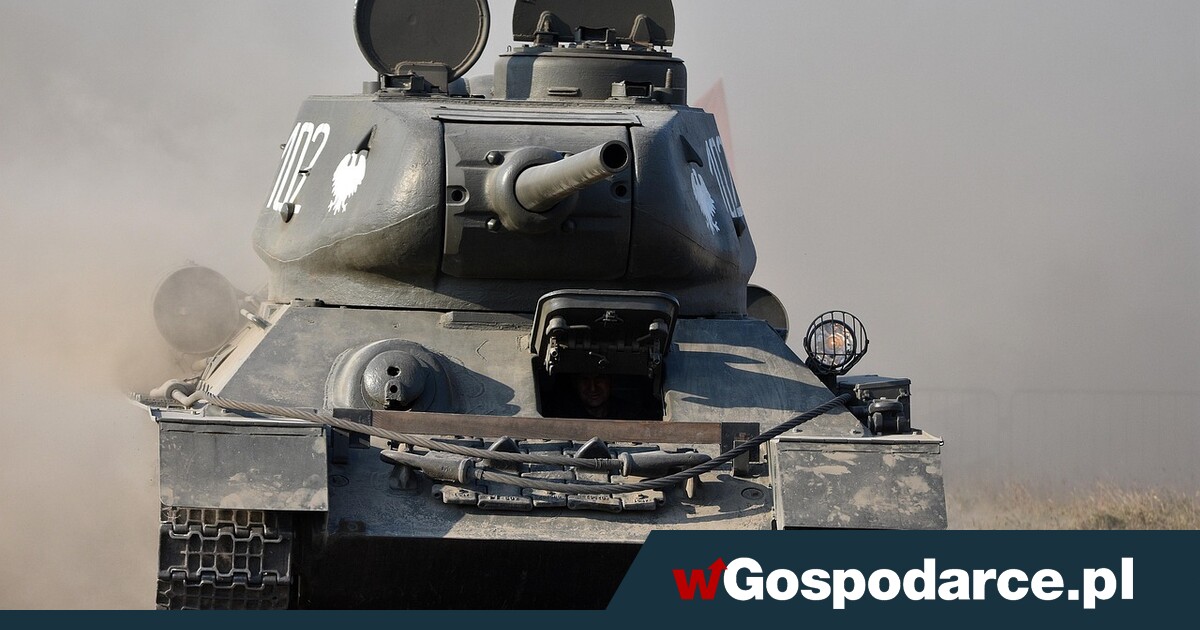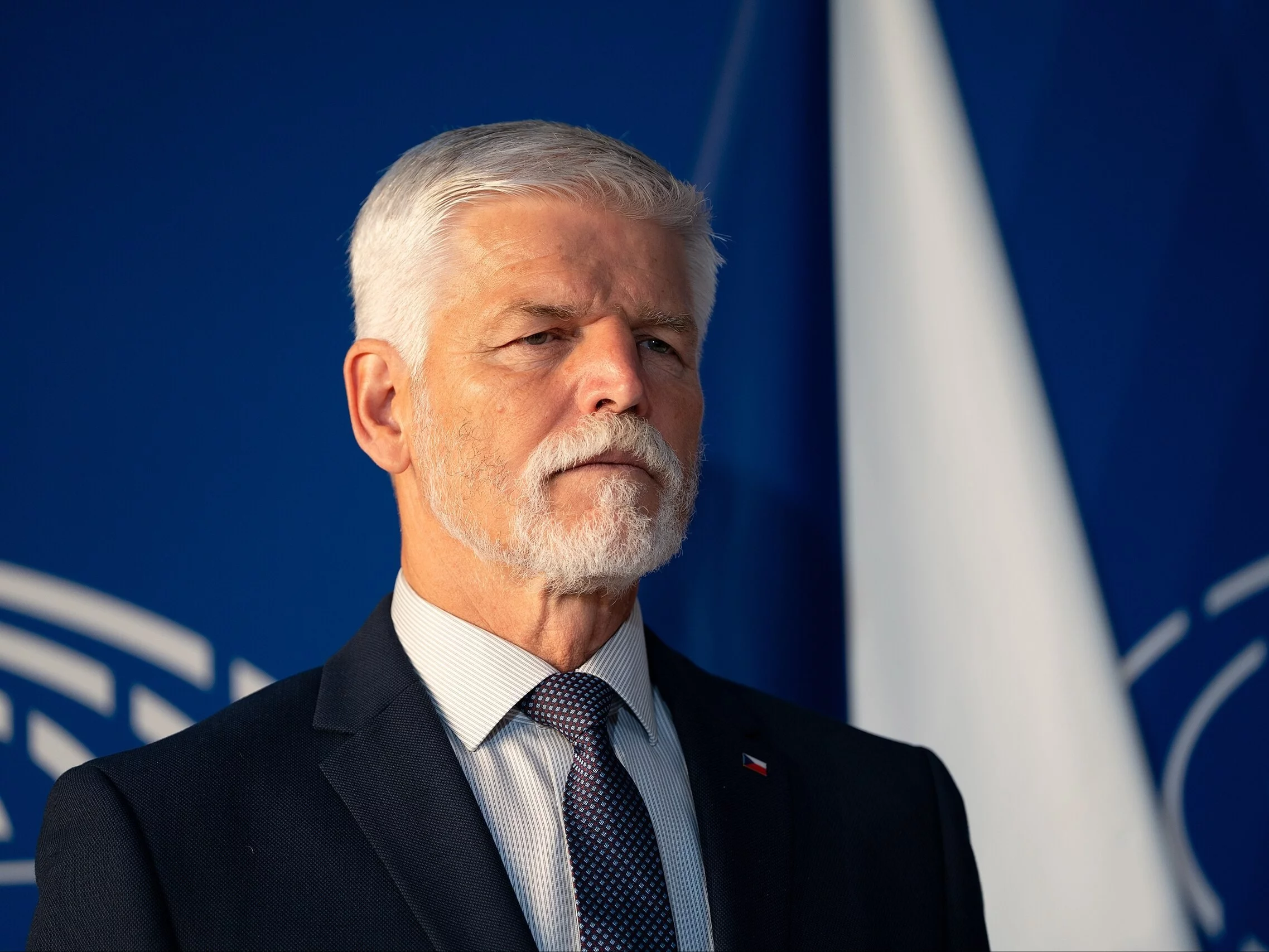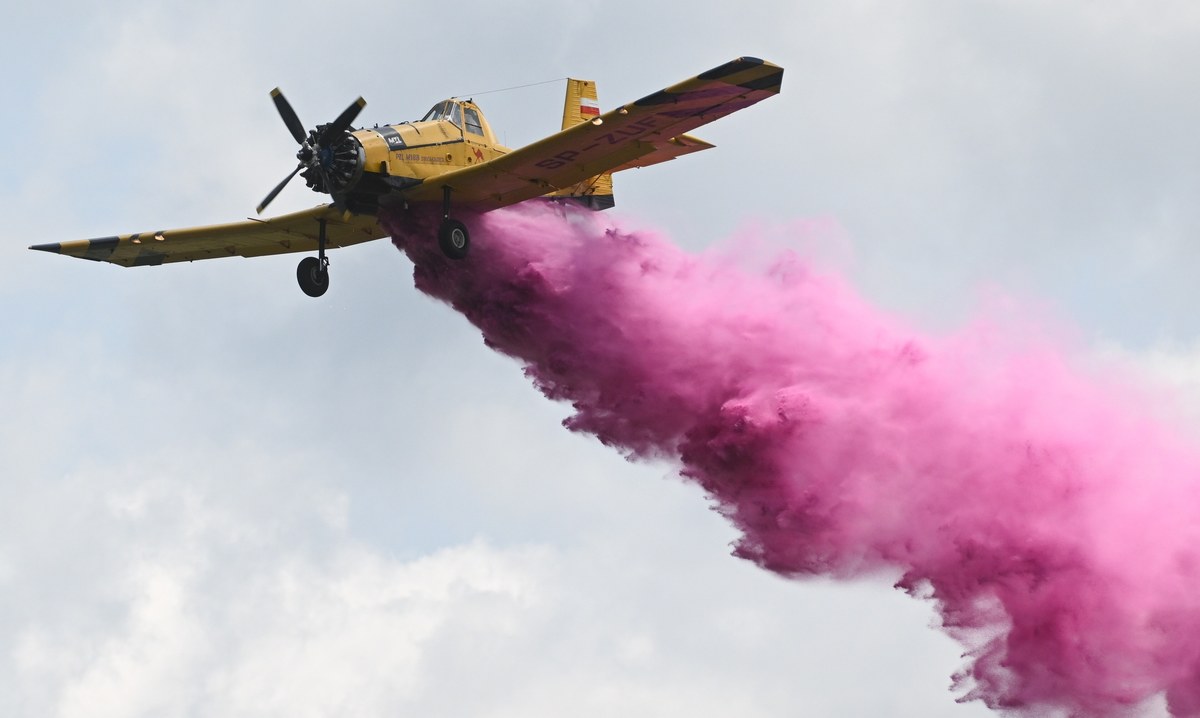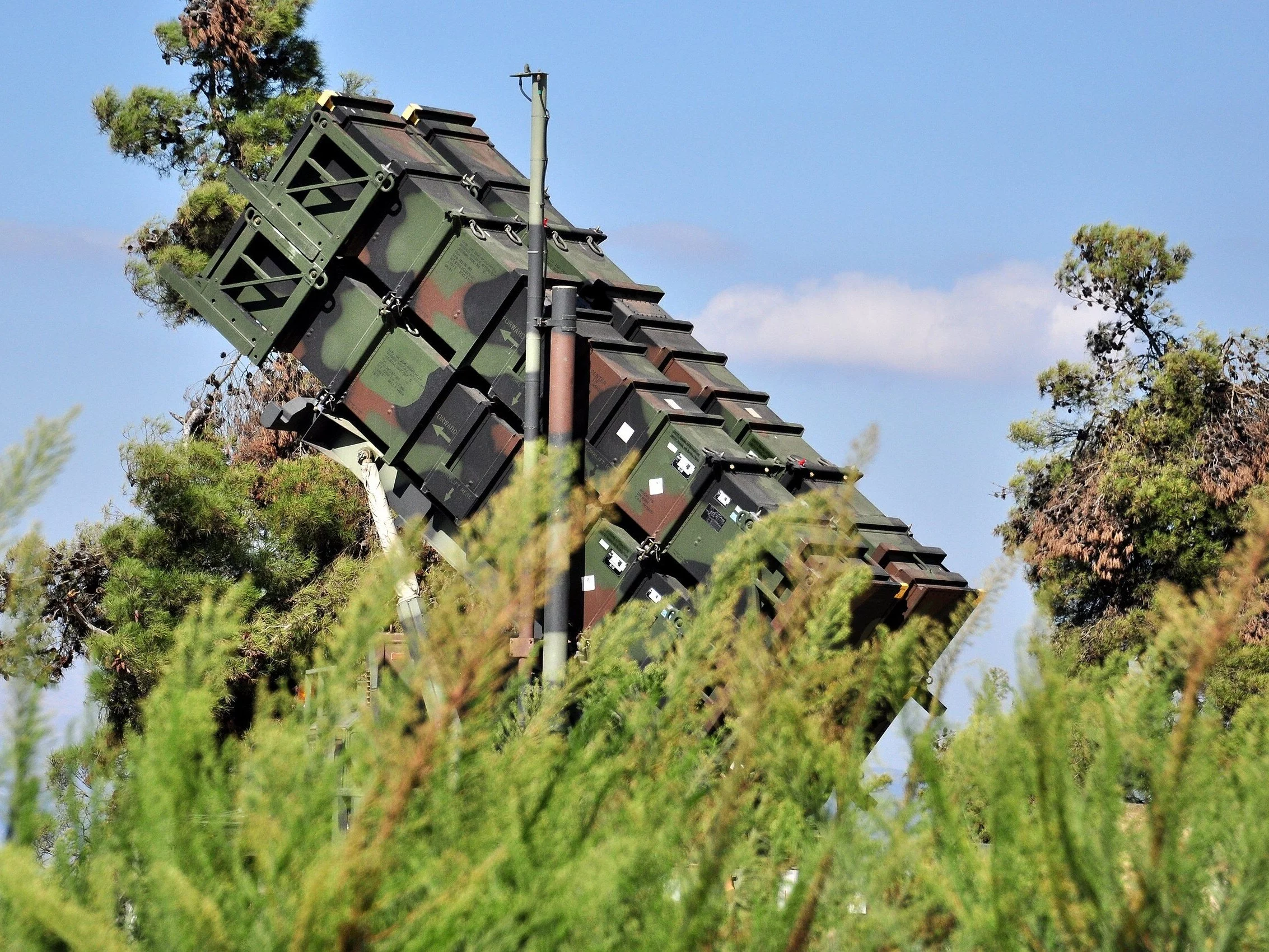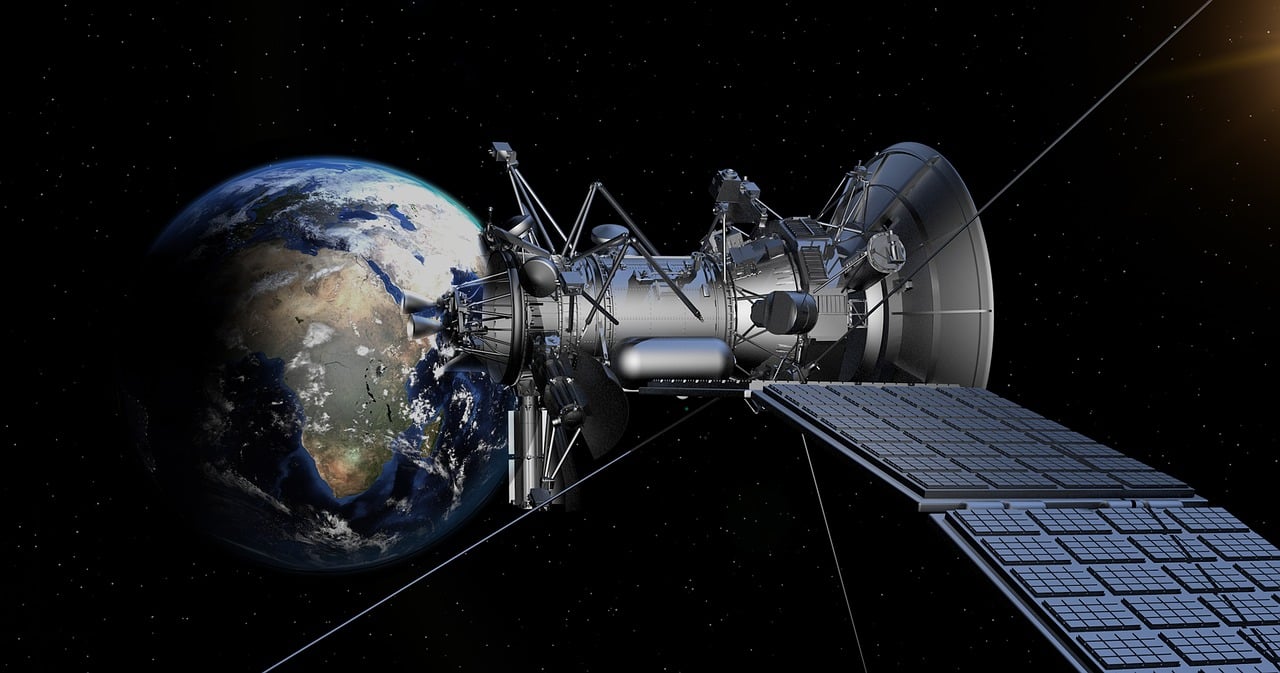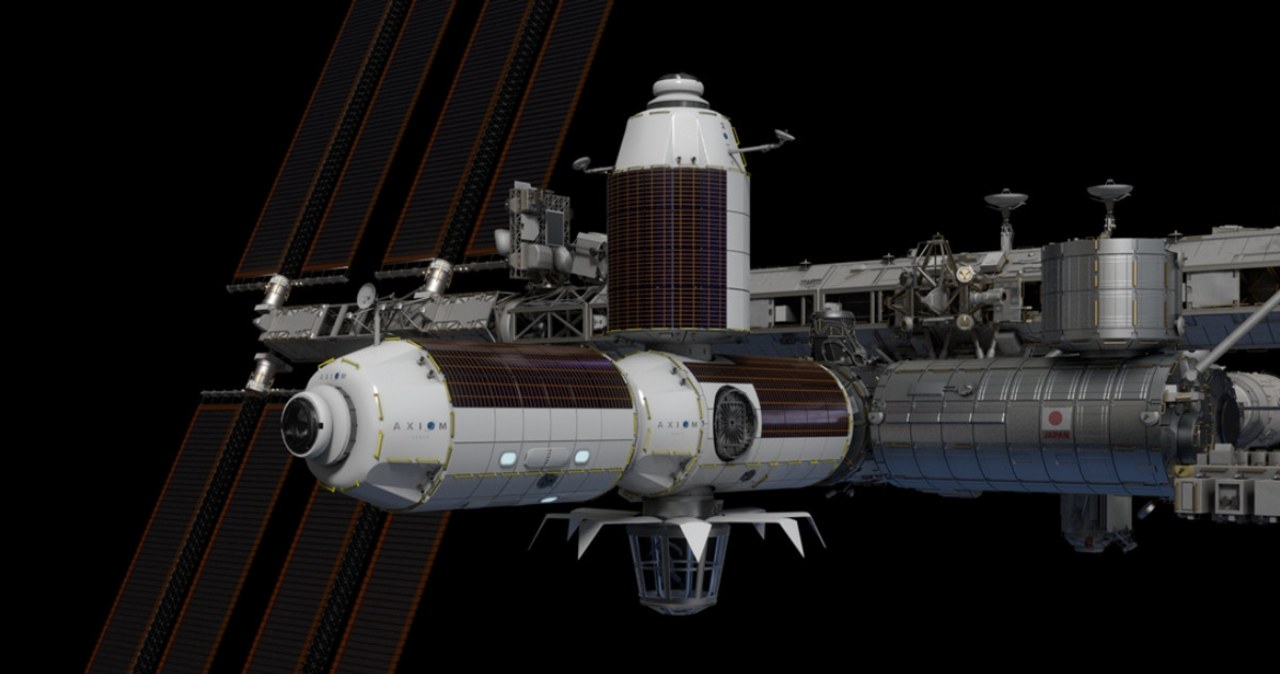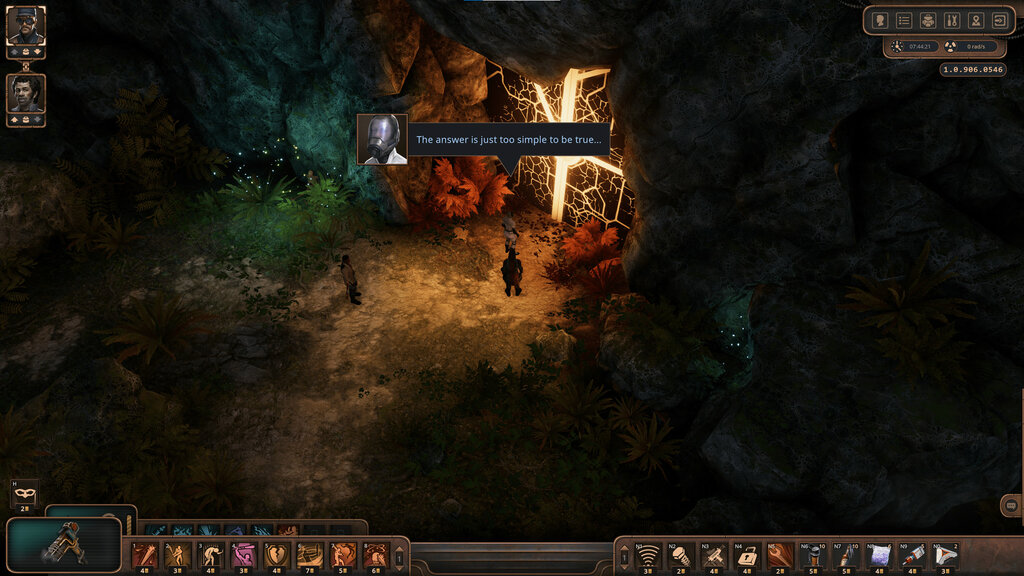No chance of stability. interior and regional circumstances in Syria

With the overthrow of Bashar al-Assad's government (December 2024), the process of constitution of the fresh political and systemic order began in Syria. It was dominated by the winning group Hajat Tahrir al-Sham (HTS; formally self-resolved on January 29) and its leader Ahmed Ash-Shara, serving as the country's president. The fresh authorities were de facto recognised by the global community and formally by the main political forces in the country. However, Syria remains a profoundly divided state and interior conflicts in which external actors (mainly Turkey and Israel) play an active role.
Postasadic Syria has revalued regional policy. Iran and Russia's influence on Turkish and Israeli interests has been reduced. The request for a sustainable stabilisation of the country in a fresh reality has become an urgent one. On its own terms, this stabilisation is of the top interest to Ankara, the Gulf States and the EU (the last 2 with limited instruments of influence on dynamics in the country). The U.S. has taken a long-distance and ambiguous stance towards Syrian processes. Its instability – for various reasons – benefits Israel, Iran and Russia. The possible of normalising the situation – both in terms of safety and political and socio-economic aspects – remains distant. Conflicts of interest and limited resources of individual external actors stay an crucial obstacle.
Syria after the collapse of the Assad government – illusory stabilisation
8 December 2024 as a consequence of the spectacular offensive and collapse of the government Assad's power in Damascus was taken over by HTS – a coalition of muslim opposition forces with a extremist pedigree (based on its leadership, Shara was in the past leader of the Syrian leg of Al-Qaeda), in the past decade based in Idlib Province, where political and military structures were created and where, with Turkey's support, the fight against Asad was fought.
In over 3 months of government, HTS has laid the foundations for a fresh political order in the country. The state was headed by the leader of the winning group, Grey, who on 29 January was “named” as president by the subordinate HTS forces (the same day the organization formally dissolved). On 30 March, a permanent government was established alternatively of a temporary government. The legal framework for the authorities is set by a temporary (to apply for 5 years) constitution announced on 13 March, developed in dialog with the elected representatives of the public. On the basis of this, the country has a strong presidential strategy with effective leadership control over the legislative and judicial authority. The Constitution defines Syria, among others, as a unitary state, based on the regulation of law and guaranteeing fundamental freedoms, in which the main origin of law is Muslim legal tradition.
The fresh authorities, through negotiations, have provided themselves with a formal submission to the main political and military forces in the country, but in the constitution and formation of the fresh government, they have played a minimal function (involved representatives of cultural and spiritual minorities are not representatives of political groups). Regardless of serious frictions and conflicts, Grey and de facto HTS are the only and non-alternative central power in Syria. They besides gained real global recognition: they stay in a working political dialog with, among others, the countries of the region, Europe and the USA, Russia, although HTS itself is inactive on the list of terrorist organisations in the United States and the EU.
Ruined as of 2011, the country faces fundamental challenges, including the creation of effective administration, the reintegration of individual regions, the settlement of the Assad regime, the regulation of ownership issues, the avoidance of humanitarian disasters (90% of the population lives below the poorness threshold) and the organisation of exile return, and more broadly, the preparation of a framework for the housing of the state and economy. The precedence challenges are to guarantee effective control of the territory, essential safety and social legitimacy. In this area, the authorities face considerable obstacles.
The first and fundamental challenge is the deep political and military disintegration of Syria. In nearly a 3rd of the country, there is simply a self-appointed Autonomous Administration of east and Northern Syria, dominated by Kurds associated with the Kurdistan Workers Party. Autonomy has its own army, i.e. the Syrian Democratic Forces (SDF), with up to 100,000 militants (about 3 times more than the HTS's parent forces), trained, armed and protected by the US. The SDF, under different circumstances, cooperated with Russia, Iran and Israel. Autonomy developed an effective solution of the systemic and organization conflict with the traditions of muslim pedigree groups. The SDF formally recognized the sovereignty of the authorities in Damascus (although they were very critical of the constitution and the fresh government) and declared their willingness to integrate the compact units into the recently created army. Even with good will, this process would extend for years.
A crucial discrimination is characterized by areas of the north of the country controlled by the Syrian National Army (SNA), established under the control of Turkey. Administrative structures and the economy are heavy integrated with it, and in these areas Turkish army units are stationed and operated. SNA, with armed forces at least equal to those of HTS, announced full submission to Damascus, but in practice remains under Ankara's control. The nominal sovereignty of the authorities retains over confederate Syria – areas controlled by Sunni groups of erstwhile opposition or Druz (part of the region occupied Israel). The increasing problem is the control over coastal provinces inhabited by the alawites (background of the Asad regime) and another minorities (including Christians and Ishmailites). possible threats are inactive generated by the east of the country, which is the basis for the muslim State.
The safety situation is far from stable. In the north there are constant clashes between the SDF and the Turk-supported SNA. The situation in the west is rapidly exacerbated, where the regrouped forces of the old government in early March caused a ‘stand-up’ – in 3 days of fighting, the combined losses on both sides amounted to nearly 600 dead (almost as much as during the offensive which led to the fall of Assad) and in the massacres lost 1,000–1600 lives.
Syria is besides an area of permanent presence of external actors, primarily Israel, Turkey, USA (see below), who conduct military operations there. There are regular incidents at the border with Lebanon (the alleged support of Hezbollah for post-stasad forces). A possible challenge for safety remains utmost Muslim environments, mainly the muslim State, but besides extremist and autonomous circles in HTS and SNA (including erstwhile jihadists from abroad, including Uighur and Central Asian). The destabilization activities can be further financed by criminal structures, including drug production (approximately 80% of planet captagon production was created during the Assad regime).
Turkey – prize for “strategic patience”
Ankara is committed to the stabilisation of Syria based on Grey's power, as it wants to receive a dividend for supporting the opposition after 2013 and for aid granted to HTS after 2018. It was then that the Turks de facto dispelled the political umbrella over it and collaborated with it in coordinating the safety situation in Idlib. After 2020, they strengthened ties with the group by stopping the Russian-Syrian offensive on this city. HTS support elements were humanitarian aid to provinces, as well as turning a blind eye – if not allowed – to profit from border trade by the coalition, even though it was officially included in the Turkish terrorist organization list.
Turkey besides co-operated with HTS in the field of intelligence exchange and possibly supported the ideological evolution of the group, while building close personnel unions with its leaders (the HTS abroad Minister Hassan al-Shibani attended doctoral studies at 1 of the Turkish universities), and most likely besides coordinated the 2024 offensive with it. An crucial component of the impact on HTS is SNA, closely linked to Turkey. Therefore, Turkish politicians hope that the fresh authorities in Damascus will enable them to conduct key business interests.
Firstly, Ankara expects assistance in the liquidation of the Kurdish parastate, whose existence and improvement it sees as an existential threat. Secondly, it hopes that the stabilisation of Syria will let the mass return of refugees. In fresh years, their considerable numbers in Turkey (in the highest period of about 3.5 million, and now – about 3 million) have caused socio-political controversy, affecting the ratings of the ruling camp. The decision-makers with Recep Tayyip Erdoğan at the head of respective times announced plans for voluntary repatriation of refugees. These projects failed, and a tiny number of Syrian return after December 2024 (as reported in March by the president – around 133,000) confirms that mass return will be impossible without calming the situation in Syria. Thirdly, Ankara hopes that the authorities in Damascus will let Turkish entrepreneurs, especially in the construction sector, to participate in the reconstruction of the state under preferential conditions. Fourth, it assumes that the stableness of the state by the pro-Turkish authorities will facilitate its implementation of strategical projects. On the 1 hand, it is simply a possible agreement on delimitation of borders in the Mediterranean, which would extend Turkey's window of blocking adverse energy agreements on this water, even though it is excluded from the Mediterranean gas pipeline, to which local natural materials would be transported to Europe by Greece and Italy. On the another hand, for a chance to satisfy their own energy aspirations, for example in terms of resuming talks about the construction of the gas pipeline from Qatar.
A wide scope of instruments will support the accomplishment of the Turkish objectives. The most crucial are: military presence in Syria, cooperation with SNA, ability to advise HTS authorities in establishing state institutions and building strong economical ties (e.g. through economical activities of Syrian refugees in Turkey) or the ability to influence another actors curious in Syria, primarily in Russia and Iran.
In fresh months, the Turks have taken steps to bring them closer to achieving the objectives discussed above[1]. They lobbyed in Europe and the United States for the abolition of sanctions against Syria, decided to open the embassy in Damascus and the consulate in Aleppo (including to strengthen the legitimacy of the fresh authorities) and signalled their willingness to take over the main burden of the fight against the muslim State and the engagement of the countries of the region in it (which was to be served by the gathering of abroad ministers of Turkey, Jordan, Iraq, Lebanon and Syria in Amman on 9 March). This second argument is of peculiar importance to Ankara – it is intended to enable the US to convince it to retreat completely from Syria and to end its cooperation with SDF. This would seriously weaken the organization and make it more submissive to Damascus.
The request for American support to implement plans for Syria is just 1 of the limitations of Turkey. Others are due, for example, to the fact that Ankara, which has been in the economical crisis for years, does not have adequate resources to implement reconstruction projects. This means that it must find additional resources for this intent (in the form of money from EU partners or Qatar). This puts her at hazard of losing the position of “first partner” of the authorities in Damascus due to the fact that she besides orders them to search global partners who would more effectively support the economical recovery of the state (the first government delegations were held in Saudi Arabia, the United arabian Emirates and Qatar). Ankara besides sees the expanding hazard associated with Israel's actions – it sees the threat in the strengthening of HTS, and it besides speaks increasingly of the imminent confrontation with Turkey in Syria.
Israel – the strength of negative impact
Following the fall of Assad, Israel undertook (and continues) aggressive military action against Syria. Their objectives are:
- the demolition of its military potential,
- taking control of strategical points (like Mount Hermon),
- creation of a buffer zone,
- establishment of a business area neighbouring the territory,
- to be translated into its interior situation (by supporting centrifugal movements).
Although the fresh authorities in Damascus have not taken hostile steps against Israel and are fighting Iranian influence in their lands, Israeli forces attacked Syrian military facilities (more than 600 strikes in the first days of operation) on 8 December 2024 and launched a land invasion to the south of the country. As part of the former, they destroyed airports, anti-aircraft defence systems, rocket launchers, land equipment, weapons warehouses, and warships. As a result, the second took 235 km first2 the demilitarized region (established under the Israeli-Syrian Agreement after the 1973 War) and then moved respective kilometres into Syrian territory.
Israel thus broke the terms of the agreement (after 50 years of its validity), but Binjamin Netanyahu stated that it had "lost its power" in the face of a change of government in Damascus. This action, on the another hand, was intended to "prevent threats to Golan Hills", which—notabenes—are legally global territory in Syria, since 1967 occupied and colonized by Israel, and illegally annexed by it in 1981. After the Israeli army crossed the border, the Prime Minister announced a doubling of settlement in the area.
The Israeli organization states that its forces will stay in Syria until "the threats cease", which in practice means "indefinitely". In occupied territories, he establishes military stations and field bases and, at least sometimes, forces residents to leave the inhabited areas. On March 25, a village clashed with the local population during which the Israeli army utilized tanks and killed at least 9 people.
Israel besides aspires to have a 60-kilometre impact region in Syria. He demands the demilitarisation of the south of the country and announced a self-proclaimed protectorate over the Druzes there (which in itself met mixed reactions). He besides seeks to undermine the interior authority of the fresh authorities (e.g. by supporting the Drusian people and – little openly – the Kurds) and their global delegitization by highlighting the links with Al-Qaeda. The aim is to undermine the political order and prevent Damascus from gaining effective control over the full territory of the state (which paradoxically makes Israel the second country, alongside Iran, curious in sustaining instability in Syria).
There are respective reasons for this course. At the general level, it is simply a manifestation of wider efforts to strengthen the strategical position in the region and to effectively accomplish a hegemonic position. At a circumstantial level of concern, however, that the stabilisation of the neighbour will foster the expansion of Turkish influences (including military influences), which would inevitably limit Israel's regional aspirations. According to the Reuter Agency, he even seeks the support of the US to keep Russian military bases in Syria – as a deterrence origin for Ankara. In addition to this, he prefers weak, internally divided and with a weak global position in his surroundings – and he wants to keep this state in Syria.
Losers – Iran and Russia
The fall of Assad marked the defeat of Iran's and Russia's policies – states that had maintained an allied relation with Syria for decades, and in the period of civilian war they straight engaged in the military side of the government and decided on its continuation. Both have lost their political shift and investments. Iran was forced to retreat its forces from Syria, as a consequence of which its influence in Lebanon and Iraq importantly weakened and Turkey and Israel's regional position increased. Tehran himself faced the threat of a full - scale war with Israel and the United States. Russia had to destruct the military stations in Syria and limit its presence in the main bases: the sea in Tartus and the air Chmeym – its importance and perpetuity in this part of the planet have decreased dramatically.
Both countries officially accepted the fresh realities. For Russia, the primary nonsubjective is to confirm the lease agreements of military bases essential to carry out its safety interests in the Mediterranean and Africa. In a broader plan, Moscow hopes to rebuild any of the proceeds in Syria (and the region) and to play a function as a balancing origin in a complex and dynamic arrangement of forces, which seems to meet with interest among others of Israel and the US (also in the context of their anti-Iranian policy). It offers Damascus political legitimacy (e.g. in February there was a telephone conversation between Vladimir Putin and Grey) and an expansion of the maneuvering field. The subject of the fair is, among others, the Syrian demands for the release of Assad and the property seized by him and the Russian proposal for economical support (including oil supplies) and, in fact, friendly neutrality towards fresh authorities (Moscow has an instrument for influencing post-Sad forces, Kurds, abroad muslim radicals). In view of Russia's limited resources, the current state of uncertainty and tensions in and around Syria is so essential to keep regional competition.
For Iran, both the impact on Damascus and the options for operation in the country are more limited and the rate is much higher. Of course, the shift to the situation in Syria is mainly given by post-stasad and alawick groups (established unions, closeness to Lebanon, and thus greater possible for impact), SDF (long traditions of point cooperation, common threat to Turkey's increasing influence, aversion to Unitary Syria dominated by Sunni Arabs). Tehran is besides accused by Washington of creating and supporting extremist Sunni groups (e.g. muslim opposition Front a.k.a. Uli al-Baas in confederate Syria)[2]. Both the deficiency of another and affirmative political instruments in Syria and the hard strategical situation (e.g. the progressive dismantling of Iranian influences in the region, the expanding threat of war with Israel and the US) make him peculiarly curious in maintaining tension (although most likely not the outbreak in the close word of full-scale conflict) in Syria.
United States – distance and ambivalence
The permanent component of Syrian dynamics is the US, whose armed forces number about 2,000 soldiers there. Washington's primary goal is to fight the reborn structures of the muslim State and akin organizations (special operations are carried out regularly) and the main partner and client are SDF (trained, armed and protected by the US). The additional nonsubjective is to control proliferation of weapons of mass destruction. In a broader plan, presence on the ground allowed limited Turkish expansion in the region, influenced Iraq and, above all, controlled and reduced Iranian influence. The US policy towards Syria (especially during Donald Trump's first word and, as it seems, now) is stretched between maintaining the presence and reducing it and withdrawing from the country in the optional assignment of tasks to Turkey (including the fight against the muslim State, taking over its prisoners) and Israel.
Ambivalence and uncertainty in the American approach to Syria persist after HTS takes power. The US rapidly established working contacts with the fresh authorities, suspended the arrest warrant for Grey (due to his erstwhile affiliation with Al-Qaeda) and suspended any sanctions allowing humanitarian aid to be supplied. At the same time, they keep an essential part of the restrictions against Damascus (including the alleged Caesar Act) and HTS, which remains in the list of terrorist organizations (a origin that de facto blocks all financial relations with Syria), require the ruling to cooperate in the fight against terrorism (including the removal from the state structures of erstwhile abroad jihadists) and the liquidation of chemical weapons arsenals. Another supporting subject in the US is the threat to the existence of Christian communities in Syria.
European Union – Inclusion or (re-)repeated sanctions
Brussels besides shows interest in the stabilisation of Syria. It involves, among another things, the destabilisation of the Syrian conflict of more than a decade and, above all, the influx of refugees, in respective associate States. The EU so ensures that it will be able to support the regularisation of the situation on the ground, but provided that the fresh authorities guarantee the functioning of an "inclusive political system". Under this term, there is simply a request to build Syria, in which all cultural and spiritual groups will receive political representation – due, among another things, to fear that the deficiency of specified inclusion will be a origin of future conflicts. To encourage Damascus to implement EU demands, on 24 February, the EU Council decided to suspend part of the restrictions on Syria, including energy and transport sectors, as well as relations between banking sectors. The frost – in contrast to the end – of the regulation is intended to emphasize the conditionality and reversibility of this movement. However, the strength of this instrument remains limited, including due to US sanctions in force, which deter European business. In the safety dimension, the EU's impact on the situation in Syria remains minimal.
Gulf Monarchies – possible Reconstruction sponsors
The Kingdom of the Persian Gulf has an interest in maintaining the territorial integrity of Syria and preventing fresh safety gaps that could contribute to expanding the influence of the muslim State or akin extremist creations. The stableness of the region is crucial to them due to the fact that the monarchs of Saudi Arabia, the United arabian Emirates or Qatar search to silence interior conflicts that disorganise the socio-political situation in the mediate East.
In this area, Gulf States can supply 2 aids to Syria: financial support and economical reconstruction and lobbying, peculiarly in the US, to remove sanctions (especially the Caesar Act). However, the scope of this support is uncertain. The challenge may be to get force on the United States, especially if the Trump administration remains under strong Israeli inspiration.
The disorganization of arabian monarchs can besides introduce competition between them for influence in Syria, as well as, first of all, in the case of Saudi Arabia and the United arabian Emirates, the desire to usage its position to limit the impact of Turkey, which is essential for Damascus for safety reasons. The situation is further compounded by the fact that the authorities in Riyadh and Abu Dhabi do not take a clear affirmative stance towards Grey, fearing the political sect of Islam he represents.
Forecast
The possible of stabilisation of Syria remains distant. peculiarly pressing safety concerns are the Kurdish autonomy and coastal provinces inhabited by the alawits and, subsequently, the request to marginalise extremist environments. Regaining full sovereignty over the territory (primarily the area occupied by Israel) seems unrealistic. The authority of the fresh authorities and their adoption of a comparatively average political course depend to a large degree on resolving socio-economic problems, impossible without crucial external support, especially financial support, for which sanctions must be abolished.
Syria will stay a very crucial field of abrasion of regional actors. For any of them the weakness of the authorities and the continuing tension are acceptable or desirable – specified a state of affairs allows even fighting the influence of rivals. The Turkish imagination of the stabilisation of Syria remains distant, inter alia due to limited financial resources and counter-measures of another countries. Above all, it assumes the elimination of the "Kurdish autonomy", which would mean the escalation of the existing conflict.
The direct impact of both the EU and the Gulf States on the safety situation will most likely stay besides weak to push ambitious policy projects. The open issue is the US policy towards the Damascus authorities, the Kurdish issue and the fight against Iranian influence and Sunni radicals. In the current realities, it seems very improbable that Washington's engagement in the safety sphere will increase, even more so, in rebuilding Syria. The American policy towards it will be alternatively a consequence of broader relations with Israel and Turkey, and to a lesser degree with arabian countries, as well as strategies towards Iran and Russia.
Regardless of local circumstances, developments in Syria will depend on dynamics throughout the mediate East region. The ever-increasing conflict between Iran and Israel and the United States will play a peculiar function here. It had a decisive impact on the fall of Assad (including Israel's military operations in the months preceding this event effectively neutralized Hezbollah and importantly reduced Iranian presence in the country) and enabled HTS to gain power. It should be assumed that the crisis around Iran will besides be fundamental in the future.
[1] A. Michalski, Z. Krzyżanowska, The Syrian dilemmas of Turkey: success and then what?, OSW, 17.01.2025, osw.waw.pl.
[2] H. Malik, M. Knights, S. Mumayiz, Uli al-Baas (Part 2): Key Analytics Findings, The Washington Institute for close East Policy, 9.03.2025, washingtoninstitute.org.


